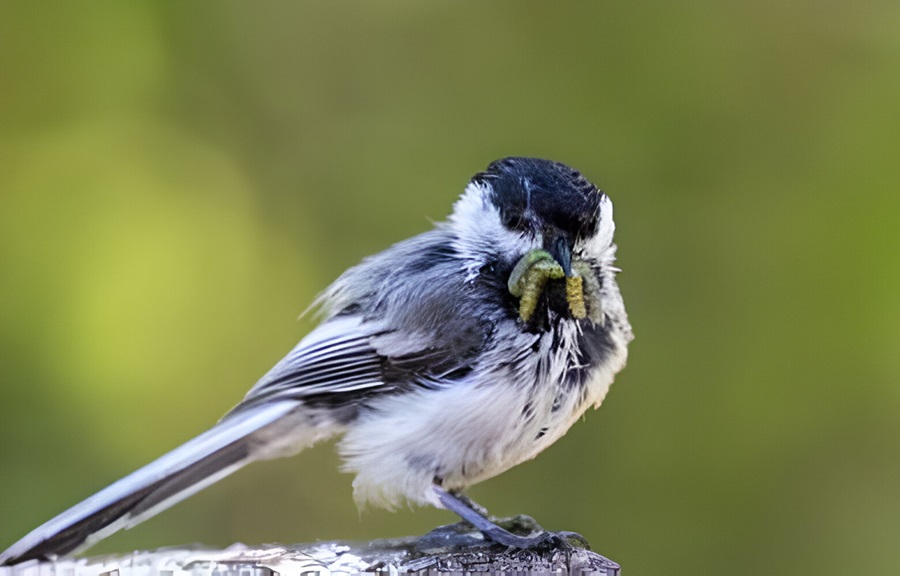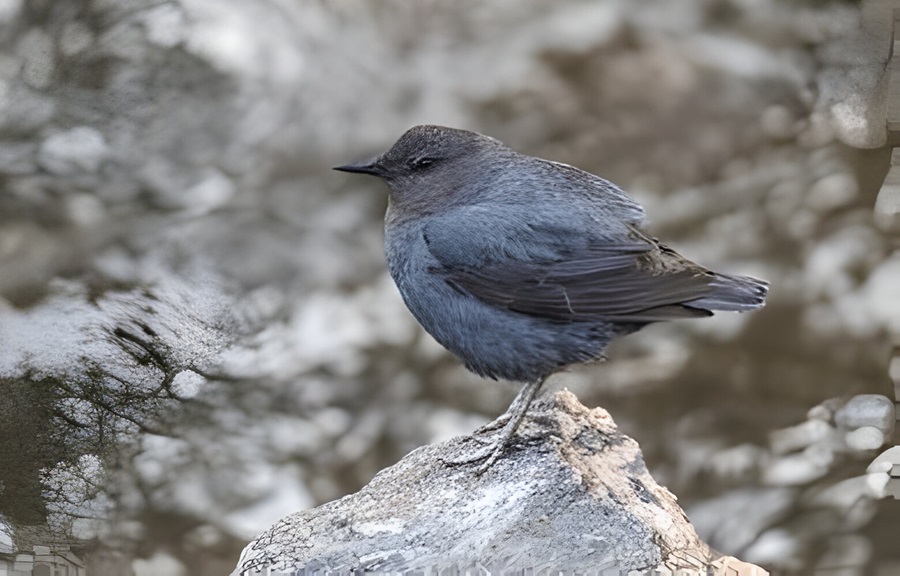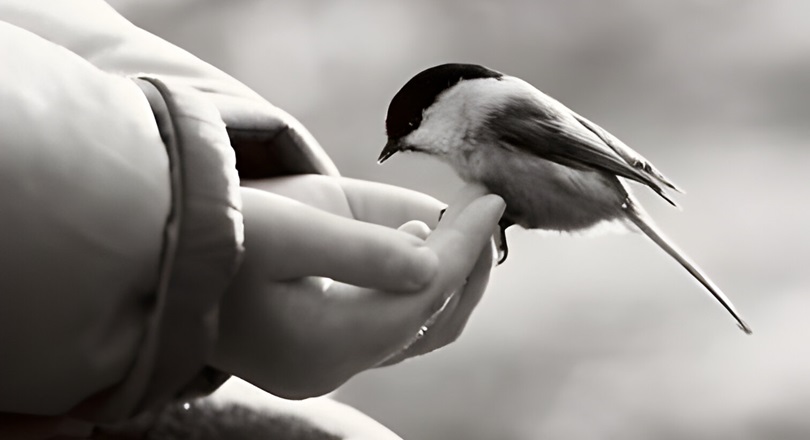Last Updated on February 28, 2025
Birdwatching in Colorado offers a unique and rewarding experience, given the state’s diverse habitats ranging from high-altitude mountains to expansive plains. Among the myriad of avian species, black and white birds hold a special allure. Their contrasting plumage makes them easy to spot and adds to the aesthetic beauty of Colorado’s natural landscapes. This article will introduce you to 20 black and white birds found in Colorado, providing detailed descriptions, of their habitats, behaviors, and the best spots to see them.
Black and White Birds
Black and white birds are a distinctive and captivating group within the avian world. Their striking plumage often serves as camouflage in snowy environments or as a warning signal in other habitats. In Colorado, these birds can be found in various settings, including forests, wetlands, and grasslands. Their presence is vital to the ecosystem, as they contribute to pest control, pollination, and seed dispersion.
List of 20 Black and White Birds in Colorado
1. Black-capped Chickadee

Description: The Black-capped Chickadee is a small, non-migratory songbird with a distinctive black cap and bib, white cheeks, and soft grey wings and back.
Habitat: Prefers deciduous and mixed forests but can also be found in urban and suburban areas.
Behavior and Diet: Known for its curiosity, this bird feeds on insects, seeds, and berries. It often caches food for later use.
Best Spots to See: Found statewide, especially in wooded areas and parks.
2. American Dipper

Description: A stout bird with a dark grey body and distinctive white eyelids. Known for its unique behavior of dipping in and out of water.
Habitat: Mountainous streams and rivers.
Behavior and Diet: Feeds on aquatic insects and small fish. Dippers are excellent swimmers, often walking underwater.
Best Spots to See: Clear, fast-flowing streams in the Rocky Mountains.
3. White-breasted Nuthatch
Description: This bird has a white face and underparts with a blue-grey back and black cap.
Habitat: Found in mature deciduous and mixed forests.
Behavior and Diet: Known for climbing down tree trunks headfirst. Feeds on insects and seeds.
Best Spots to See: Widespread in forests across Colorado.
4. Dark-eyed Junco
Description: The Dark-eyed Junco has several color variations, but the most common in Colorado are grey with white bellies and outer tail feathers.
Habitat: Forests, fields, and backyards.
Behavior and Diet: Ground feeders, primarily eating seeds and insects.
Best Spots to See: Common in forests and suburban areas statewide.
5. Black-billed Magpie
Description: Large, with striking black and white plumage and a long tail.
Habitat: Open country with scattered trees, riparian areas, and urban settings.
Behavior and Diet: Omnivorous, feeding on insects, small animals, seeds, and carrion. Known for their intelligence and complex social structures.
Best Spots to See: Common along the Front Range and western slope.
6. Eastern Kingbird
Description: Black head and back, white underparts, and a distinctive white-tipped tail.
Habitat: Open fields, grasslands, and woodland edges.
Behavior and Diet: Feeds on insects, catching them in mid-air with acrobatic flight.
Best Spots to See: Found in eastern Colorado during summer.
7. Downy Woodpecker
Description: The smallest North American woodpecker, with black and white checkered plumage and a small bill.
Habitat: Forests, woodlots, and urban areas.
Behavior and Diet: Feeds on insects, particularly beetle larvae, and also consumes seeds and berries.
Best Spots to See: Throughout Colorado, particularly in wooded areas.
8. Hairy Woodpecker
Description: Similar to the Downy Woodpecker but larger, with a longer bill and more pronounced white patches on the back.
Habitat: Mature forests, woodlands, and suburban areas.
Behavior and Diet: Similar to the Downy Woodpecker, feeding primarily on insects.
Best Spots to See: Found in forests across Colorado.
9. Northern Shrike
Description: Grey and white plumage with black wings and mask. Known for its predatory behavior.
Habitat: Open habitats with scattered trees and shrubs.
Behavior and Diet: Feeds on insects, small birds, and mammals, often impaling prey on thorns.
Best Spots to See: Northern and central Colorado during winter.
10. Clark’s Nutcracker
Description: Pale grey body with black wings and tail. Named after explorer William Clark.
Habitat: High-altitude pine forests.
Behavior and Diet: Feeds on pine seeds, which it caches for winter. Known for its role in seed dispersal.
Best Spots to See: Alpine and subalpine zones of the Rockies.
11. Western Grebe
Description: Black cap and neck with white cheeks and underparts. Long neck and red eyes.
Habitat: Lakes, marshes, and rivers.
Behavior and Diet: Dives for fish and aquatic insects. Known for elaborate courtship displays.
Best Spots to See: Large bodies of water in western Colorado.
12. Pied-billed Grebe
Description: Small, stocky bird with a brown body and a distinctive black and white bill.
Habitat: Freshwater ponds, lakes, and marshes.
Behavior and Diet: Dives for fish, crustaceans, and insects. Known for its ability to sink slowly by controlling its buoyancy.
Best Spots to See: Wetlands throughout Colorado.
13. Loggerhead Shrike
Description: Grey and white with a black mask and wings. Similar in behavior to the Northern Shrike.
Habitat: Open country, grasslands, and shrublands.
Behavior and Diet: Predatory, feeding on insects, small birds, and mammals. Also impales prey on thorns.
Best Spots to See: Eastern plains and southern Colorado.
14. Black-and-white Warbler
Description: Striking black and white streaked plumage. Resembles a miniature woodpecker in its behavior.
Habitat: Deciduous and mixed forests.
Behavior and Diet: Feeds on insects, often creeping along tree trunks and branches.
Best Spots to See: During migration in spring and fall, particularly in eastern Colorado.
15. Lark Bunting
Description: Breeding males are black with a large white patch on the wings. Females and non-breeding males are brown with streaks.
Habitat: Grasslands and prairies.
Behavior and Diet: Feeds on seeds and insects. Known for its melodic song and aerial displays during breeding season.
Best Spots to See: Eastern plains and prairies.
16. Snow Bunting
Description: Winter plumage is white with black on the back and wings. Breeding males are predominantly white.
Habitat: Tundra and open fields.
Behavior and Diet: Feeds on seeds and insects. Often found in flocks during winter.
Best Spots to See: High-altitude tundra and open fields in northern Colorado during winter.
17. Mountain Chickadee
Description: Similar to the Black-capped Chickadee but with a distinctive white eyebrow stripe.
Habitat: Coniferous forests and mountainous regions.
Behavior and Diet: Feeds on insects, seeds, and berries. Known for caching food.
Best Spots to See: Common in the Rockies and high-altitude forests.
18. Black-backed Woodpecker
Description: Black back with white underparts and black and white barred flanks. Males have a yellow crown.
Habitat: Burned forests and coniferous forests.
Behavior and Diet: Feeds on insects, particularly beetle larvae found in dead trees.
Best Spots to See: Burned forest areas in the Rockies.
19. Great Horned Owl
Description: Large owl with ear tufts, mottled grey and brown body, and striking yellow eyes.
Habitat: Forests, deserts, and urban areas.
Behavior and Diet: Feeds on a variety of prey, including mammals, birds, and reptiles. Known for its deep hooting call.
Best Spots to See: Widespread across Colorado, particularly in wooded and semi-open areas.
20. Barn Swallow
Description: Dark blue back and wings with a white underbelly and a distinctive forked tail.
Habitat: Open fields, farms, and urban areas.
Behavior and Diet: Feeds on flying insects. Known for its graceful flight and mud nests built on structures.
Best Spots to See: Common in rural and suburban areas throughout Colorado.
Tips for Birdwatching in Colorado
Birdwatching in Colorado can be incredibly rewarding, especially with the state’s diverse landscapes. Here are some tips to enhance your birdwatching experience:
- Best Times of Year for Birdwatching: Spring and fall migrations are the best times for birdwatching, as many species pass through Colorado. Early morning is typically the most active time for birds.
- Recommended Gear and Equipment: Binoculars, a field guide, a notebook, and a camera are essential. Dress in layers and wear sturdy footwear.
- Birdwatching Etiquette and Conservation Tips: Respect wildlife and their habitats. Stay on designated trails, keep a safe distance from birds, and avoid disturbing nests. Participate in citizen science projects and support local conservation efforts.
- Notable Birdwatching Locations and Trails in Colorado: Some prime birdwatching spots include Rocky Mountain National Park, Chatfield State Park, Barr Lake State Park, and the San Luis Valley. These areas offer diverse habitats and a high likelihood of spotting various bird species.
Conclusion
Black and white birds add a unique charm to Colorado’s diverse bird population. Their striking plumage and varied behaviors make them a joy to observe. By exploring the habitats and behaviors of these 20 black and white birds, birdwatchers can gain a deeper appreciation for the avian diversity in Colorado. Whether you are a seasoned birder or a novice, the thrill of spotting these beautiful birds in their natural environment is a rewarding experience. Get out your binoculars, head to the nearest birdwatching spot, and enjoy the wonders of Colorado’s black and white birds.

